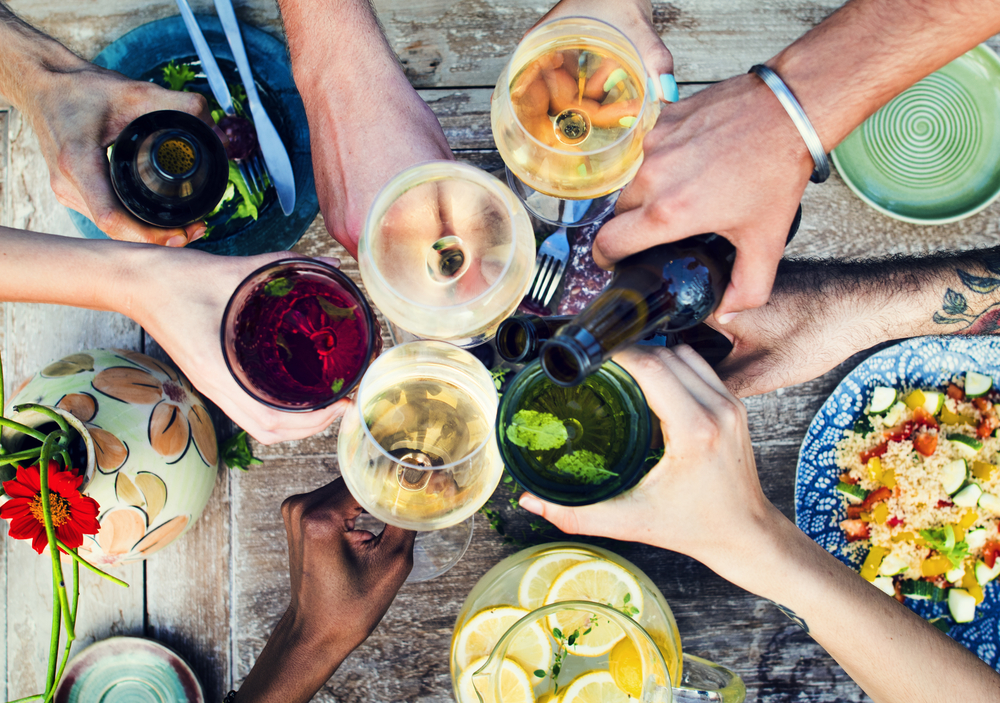There are different types responding to the sensation that you want to create on the palate of the diner. Affinity pairing seeks common ground between dishes and wine. The pairing by contrast seeks precisely the sensations found between the two, while the regional pairing uses the same origin of both things, which is almost always effective.
Affinity
Pairing
Sharing qualities is one of the keys to
human relationships, a rule that also applies to pairings. When meats are
smoked, they appreciate red wines that also have this aromatic note, for
exampleclos
du marquis wines. Much less proven is the relationship between wines and
foods that share color tones, however, red wines and dark chocolate, as well as
white wines and cheeses or rosé wines with octopus seem to strive to establish
ties beyond sharing similar colors.
Contrast
Pairing
There are foods and wines that a priori do not seem to have
anything in common, but when merged give life to a new and very pleasant taste
sensation. It happens, for example, with sweet wines when paired with blue
cheeses. The contrast between the sweetness and the pungent sensation of the
penicillium mold forms a pleasant savory sensation.
Regional
Pairing
Perhaps because they come from the same place, the typical
wines and foods of a certain area tend to pair well, naturally, as if they were
intimately linked. The spicy sausages with the red wines of their region, the
white wines with the cheeses that are made in the same places or the
traditional roasts with the red wines aged in wood are clear examples. No one
disputes these pairings, which have been on the palate for centuries and are
seen as logical.
Keys To Pair
With Wine
For those who are just starting out, there are a series of
simple tips that can make the task easier. It is true that the more different
wines tasted, the easier it will be to take the reins of harmonization.
Respect
Between Wines And Food
The pairings in which the wine or the foods are completely
imposed, one over the other, tend to be unsuccessful, since the notes that one
of them could contribute are eclipsed. Both products: wine and food, must be
able to reflect their flavor without it being overwhelmed by the power of the
other.
Note Balance
When we harmonize wine and snacks, we look for a balanced
sensation, in which no particular note stands out excessively. If the acid
notes shoot up in our mouths, or the bitters end up starring in the pairing, we
will hardly qualify it as successful. Elegance is often in balance.
Simplification,
The Classic Pairing To The Rescue
On most occasions, the much-touted phrase "meat with
red, white with fish" works. Sometimes, it is not necessary to complicate
and bet on a classic pairing that we know will work in 90% of the cases.
Proximity, The
Countrymen Understand Each Other
Almost any food finds one of its best pairings among the
wines produced in its environment. In addition, our palate will identify the
sensation of both with a specific region.
Consult
Proposals On The Labels
The wineries that in an environment of multitude of brands in
the market seek to differentiate themselves in some way, have begun to include
pairing suggestions in the back labels of their wines, facilitating the work of
the consumer.
A Personal
Matter
In the same way that each one of us has preferences in terms
of perfumes, we have our favorite wines. The senses are very personal and
perhaps what is a good pairing for one person will not be to the liking of
another.
Types Of Wines
In The Pairings, Which Are The Best?
The best wines to pair with are often those with a fairly
neutral aromatic profile, which remain in the background, without taking over
the bite, which is usually less aromatic. The serving temperature, which varies
according to the category of wine, is also an important factor when it comes to
filling the glasses at lunch, since the sensations that the same wine provides
at different temperatures are really disparate.
Wines that have very marked aromas, both in the floral range
and in the tertiary notes (wood, for example) are usually a challenge, as they
can saturate our senses when mixed with food.
In addition, there is a black list of products that are
difficult to pair with. Namely: artichokes, asparagus, cabbages... fortunately
there is also quite a consensus on which wines it is advisable to use in these
extreme cases of foods with an overwhelming aromatic and taste personality:
Sherry wines play a good role. Also all those dishes in which vinegar, a sour
cousin of wine, takes center stage, such as salads or pickles, will make it
very difficult to choose the wine to accompany them.
The very spicy or spicy sensations provided by some cooking
dishes ask the drink that accompanies them to dampen their power, so the wines
we choose to accompany these Mexican, Thai or Vietnamese specialties, for
example, will have to be capable of refreshing the palate. White wines served
especially cold will help anesthetize the taste buds.










